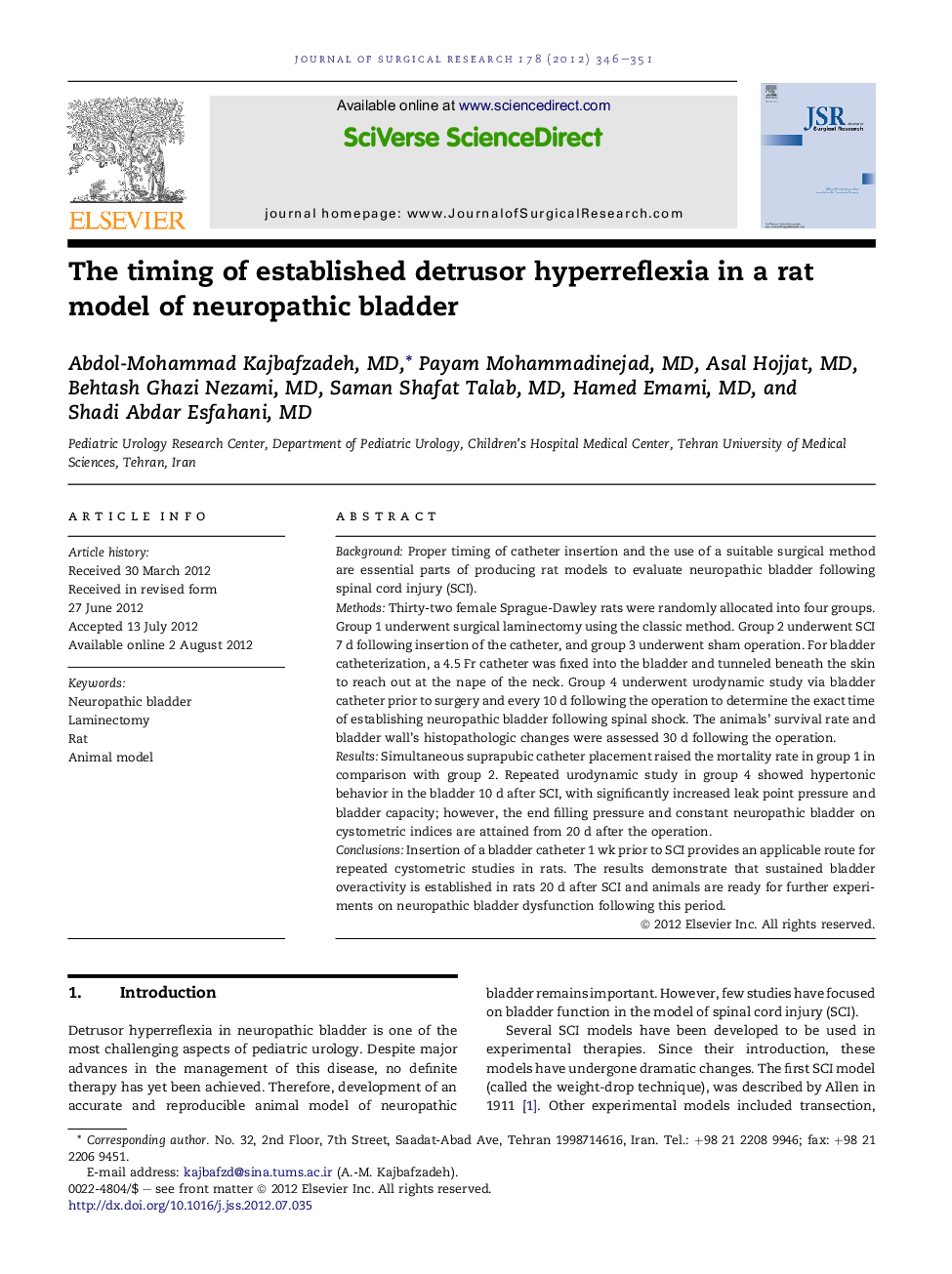| Article ID | Journal | Published Year | Pages | File Type |
|---|---|---|---|---|
| 4301402 | Journal of Surgical Research | 2012 | 6 Pages |
BackgroundProper timing of catheter insertion and the use of a suitable surgical method are essential parts of producing rat models to evaluate neuropathic bladder following spinal cord injury (SCI).MethodsThirty-two female Sprague-Dawley rats were randomly allocated into four groups. Group 1 underwent surgical laminectomy using the classic method. Group 2 underwent SCI 7 d following insertion of the catheter, and group 3 underwent sham operation. For bladder catheterization, a 4.5 Fr catheter was fixed into the bladder and tunneled beneath the skin to reach out at the nape of the neck. Group 4 underwent urodynamic study via bladder catheter prior to surgery and every 10 d following the operation to determine the exact time of establishing neuropathic bladder following spinal shock. The animals' survival rate and bladder wall's histopathologic changes were assessed 30 d following the operation.ResultsSimultaneous suprapubic catheter placement raised the mortality rate in group 1 in comparison with group 2. Repeated urodynamic study in group 4 showed hypertonic behavior in the bladder 10 d after SCI, with significantly increased leak point pressure and bladder capacity; however, the end filling pressure and constant neuropathic bladder on cystometric indices are attained from 20 d after the operation.ConclusionsInsertion of a bladder catheter 1 wk prior to SCI provides an applicable route for repeated cystometric studies in rats. The results demonstrate that sustained bladder overactivity is established in rats 20 d after SCI and animals are ready for further experiments on neuropathic bladder dysfunction following this period.
